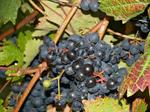Viticulture
 Grapes are produced as a fresh and dried fruit, but also to produce fruit juice, and most importantly wine. Wine can be produced on any scale. The largest wine producers are multi national companies with vineyards and wineries spread across the globe. Despite the competition, small boutique wineries continue to emerge and develop as successful businesses and thousands of amateurs continue to grow and make wine at home, sometimes from little more than one or two vines.
Grapes are produced as a fresh and dried fruit, but also to produce fruit juice, and most importantly wine. Wine can be produced on any scale. The largest wine producers are multi national companies with vineyards and wineries spread across the globe. Despite the competition, small boutique wineries continue to emerge and develop as successful businesses and thousands of amateurs continue to grow and make wine at home, sometimes from little more than one or two vines.
Grapes are now being grown successfully in a wide variety of places, even locations previously considered inappropriate.
Winemaking Processes:
1. Grapes are picked and brought to the press house and fed into a crushing machine to extract the juice. The crusher also removes stems. Stems will increase the pH of the juice which, in turn, decreases colour intensity and fruitiness. Crushing is the process of mechanically breaking the grape skins in order to expose the juice to the yeast and permit alcoholic fermentation. Tannins will be extracted mainly from the grape skins, however, some stems made left in or even added in small amounts to increase tannin levels (especially in reds).
2. The next stage in the winemaking process will follows a different course according to the type of wine being made:
- White grapes have their skin removed
- Red grapes being used to make red wine have skins left in during fermentation (if skins were removed, red grapes would turn into white wine). Maceration is the process of letting crushed grapes soak in their juice for the purpose of extracting phenols from the solids. Reds wines obtain their distinctive ‘structure’ during this phase. They develop colour, flavour and texture. Full bodied reds, such as Cabernet Sauvignons may be left to macerate for up to 21 days.
- With Rose, skins from red grapes are removed a short time after fermentation starts.
3.Pressing is the process of juice extraction from the crushed grapes by pressure. Pressed white grapes produce a cloudy juice that will require clarification during the final stages of vinification. The juice derived from pressing is usually fermented separately.
4. Alcoholic fermentation. This stage is where the juice is converted into wine and is, hence, an important step in good winemaking. Yeasts will convert sugar into alcohol during fermentation so the strain of yeast used is vital. The winemaker needs to control factors such as sugar concentration, acidity and pH, temperature, SO2 levels. Fermentation should be monitoring regularly by assessing the changing sugar concentration (Brix) in the container. Secondary, or malolactic, fermentation is sometimes used after alcoholic fermentation.
5. Clarification removes cloudiness and haze from wine. A good wine should be free of suspended particles. Sedimentation and racking are traditional clarification methods. Fining agents and filtration are more often used in commercial winemaking for expedience.
6. Sometimes wine from two or more varieties of grape is blended to yield the final drinkable product. Blending has an extensive tradition and is responsible for the distinct flavour and characteristics of regional wines. This process is also called assemblage. Blending between vintages is used to ensure consistent, good quality product. Blending allow the winemaker to instil a good balance to the wine they produce. Well done properly, blending establishes a good balance of complexity of smell (bouquet) and taste, body, fruitiness, colour intensity, acidity, oak character and many other important characteristics.
7. Storage and barrelling can enhance the characteristics the winemaker has infused into the wine. Complexity of flavour and feel can be improved through oak barrelling. The main difference between storage in steel of glass containers versus barrels is the very slow diffusion of air and evaporation that occurs through barrels. Some wines are actually fermented in barrels, resulting in complex flavours.
8. Bottling is the final stage in the winemaking process. Wine is bottled for the purpose of distribution for immediate consumption or for further ageing. The main goal of bottling is to prevent the wine from further exposure to air. The actual shape of the bottle can easily identify wines of particular types e.g. Burgundy-style, Champagne, Port etc.. Wines to be aged are stored in green or brown-tinted bottles. Traditionally premium wines have been sealed with a natural cork, however, there are alternatives. Synthetic corks are available and screw caps that offer effective sealing are becoming more popular. Capsules are often placed over corked necks to retard mould formation and improve the look of the bottle.
9. Cellaring. Certain wines will be enhanced by time spent in storage. However, storage conditions will alter the effect the wine’s ageing process. Cellaring conditions should provide a constant temperature between 10 and 13°C, constant humidity between 55 and 75%, a clean atmosphere e.g. no strong smells, complete darkness.
You may also be interested in....